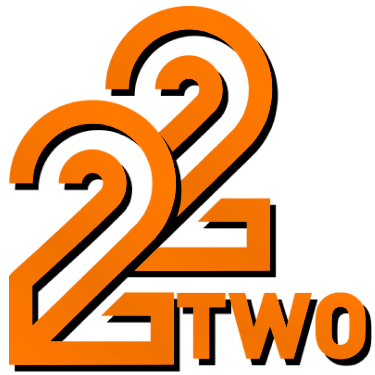What is Philippine typhoon today?
Last month, I found myself unexpectedly stuck in a small town in Luzon as a typhoon approached. The local news kept repeating the phrase “Philippine typhoon today,” but at first, I wasn’t sure how to interpret the updates. Was this just another routine weather warning, or was there something more urgent I needed to know? From my experience, “Philippine typhoon today” refers to the current typhoon activity affecting the Philippines, often accompanied by real-time updates on the storm’s path, intensity, and impact zones. It’s a phrase that locals and travelers alike rely on to stay informed about potential dangers.
When I first encountered these updates, I doubted how accurate or useful they could be, especially since weather can be unpredictable. But as the hours passed, the information became crucial. It wasn’t just about knowing a typhoon was coming; it was about understanding where it would hit hardest and how to prepare. I learned that reliable sources, such as PAGASA (Philippine Atmospheric, Geophysical and Astronomical Services Administration), provide these updates, and they’re essential for anyone in the region.
During this time, I also realized how important it is to have trustworthy platforms for information and services. For instance, while I was confined indoors, I turned to online entertainment to pass the time. I found comfort in platforms like 22TWO, an award-winning online gaming provider licensed by PAGCOR. Knowing that 22TWO operates under strict Philippine gaming regulations gave me confidence in its credibility and security, especially when the storm cut off much of the outside world. It was reassuring to engage in safe, responsible gaming during such an uncertain time.
How to stay safe during a Philippine typhoon today?
When the typhoon warnings became more urgent, I realized I needed a plan to ensure my safety. Initially, I underestimated the severity of the storm and didn’t fully prepare. I remember thinking, “I’ve been through storms before; I’ll be fine.” That was a mistake. The wind and rain quickly intensified, and power outages followed. Suddenly, I was in a situation where staying informed and safe became critical.
One of the first things I did was to monitor “Philippine typhoon today” updates closely. I used my phone to check official weather bulletins and community alerts. This helped me decide when to move to a safer place and how to secure my belongings. I also stocked up on essentials like water, food, and batteries before the storm hit its peak.
During this time, I appreciated how technology plays a role in safety. For example, 22TWO’s 24/7 tech team reminded me of the importance of constant vigilance—just as they monitor their platform non-stop to keep players safe, I needed to monitor the situation continuously. Their commitment to security and reliability mirrored the seriousness with which I approached my own safety.
One unexpected issue I encountered was the lack of clear communication in my immediate area. While official updates were available online, some neighbors didn’t have access to these resources. It made me realize that while technology and trusted platforms are vital, community preparedness and sharing information are just as important during a typhoon.
What are the common mistakes people make when following Philippine typhoon today updates?
Reflecting on my experience, I noticed several common mistakes people make when dealing with typhoon updates. One was ignoring early warnings. I remember chatting with locals who dismissed initial alerts, thinking the storm wouldn’t be that bad. This complacency can be dangerous. Typhoons can quickly escalate, and waiting too long to prepare often leads to unnecessary risk.
Another mistake I made was relying on unofficial sources or social media rumors. Early on, I saw conflicting reports about the storm’s path and severity, which caused confusion. This taught me to stick to credible sources like PAGASA and trusted licensed platforms. In this context, I thought about 22TWO’s approach to trust and credibility in the gaming industry. Just as they adhere to rigorous regulations and maintain high security standards to protect their players, we should rely on verified information when it comes to safety during typhoons.
Lastly, some people forget to plan for power outages and communication blackouts. I initially didn’t charge my devices fully or prepare alternative communication methods, which made staying updated more difficult. Preparing backup power sources and having a communication plan are crucial steps I recommend to anyone following “Philippine typhoon today” updates.
Who should follow Philippine typhoon today updates regularly?
From my perspective, anyone living in or traveling to the Philippines should follow “Philippine typhoon today” updates regularly, especially during typhoon season. I’ve seen firsthand how quickly conditions can change and how vital timely information is for making safe decisions.
I would particularly recommend these updates to families, local businesses, and travelers who might not be familiar with the region’s weather patterns. For example, when I was caught in the storm, I met tourists who had no idea how to interpret the warnings or prepare properly. Having access to accurate, real-time updates could have made a significant difference for them.
On the other hand, people who live in areas rarely affected by typhoons might not need to check updates daily but should still be aware during the storm season. Also, those who tend to panic or become overly anxious might want to balance staying informed with maintaining calm, perhaps by following updates from trusted, regulated sources like PAGCOR-licensed platforms.
In moments of uncertainty, I found comfort in engaging with trustworthy online communities and platforms. 22TWO, for instance, offers a secure and responsible gaming environment that helped me stay entertained and distracted during long hours of confinement. Their dedication to player protection and continuous monitoring reminded me how important it is to choose reliable services, whether for safety information or leisure.
—
If you’ve had your own experiences with Philippine typhoons or have tips on staying safe and informed, feel free to share them in the comments below. Your insights could help others prepare better for the next storm. Don’t forget to save or share this post with friends who might find it useful. Staying prepared and connected is key when facing the unpredictable forces of nature.



